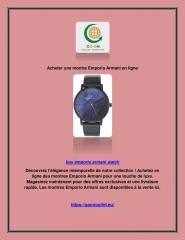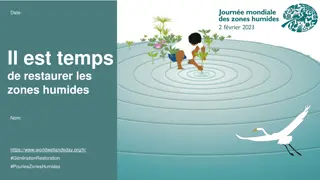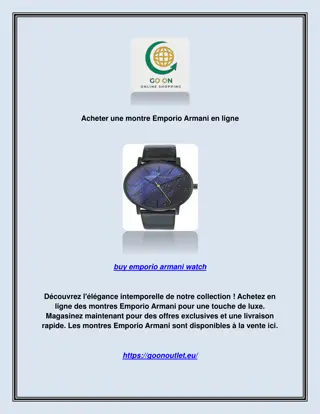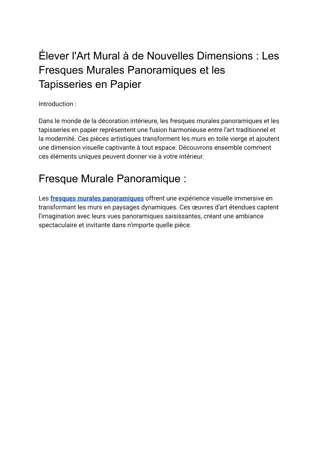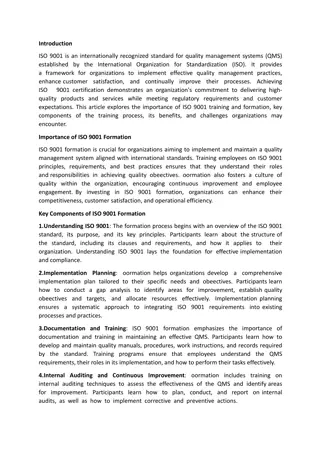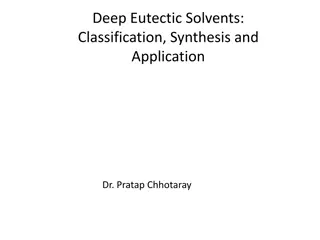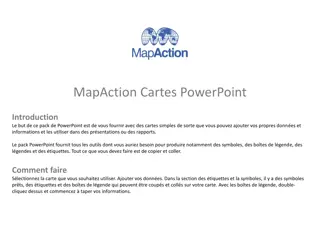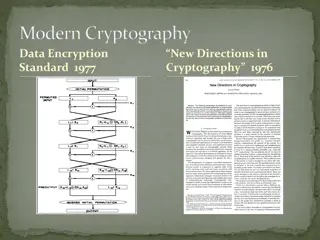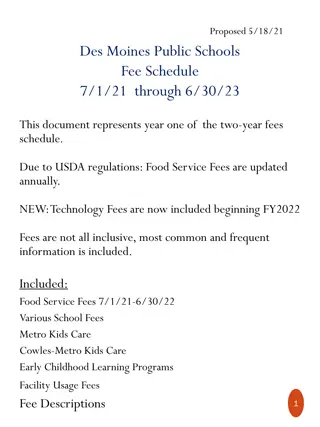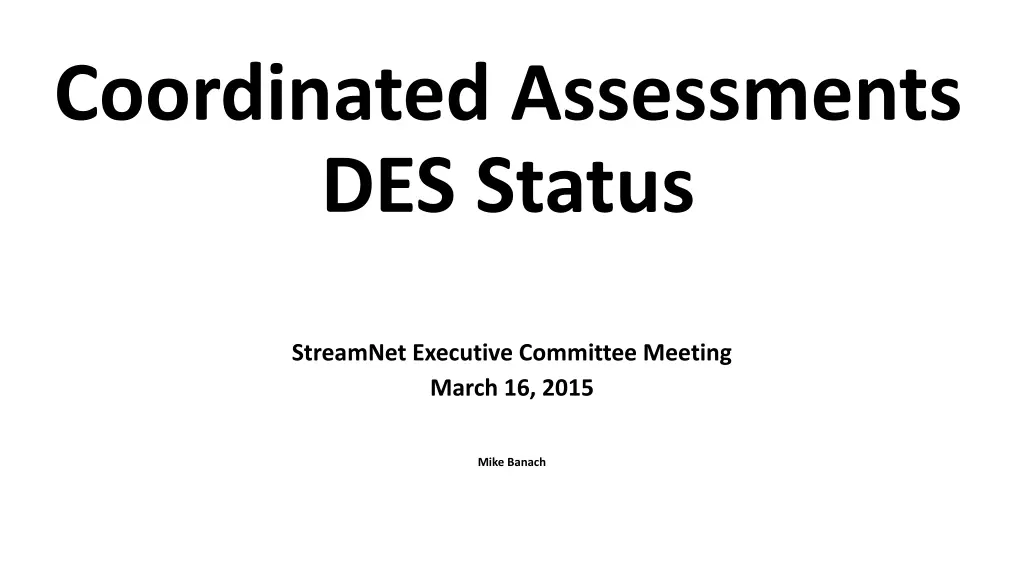
Coordinated Assessments DES Status: Executive Meeting Indicators & Metrics
Explore the approved and new indicators/metrics up for adoption, along with existing issues to resolve from the Coordinated Assessments DES Status executive committee meeting. Dive into details of various metrics such as Natural Origin Spawner Abundance, Smolt to Adult Ratio, Recruits per Spawner, and Proportionate Natural Influence.
Download Presentation

Please find below an Image/Link to download the presentation.
The content on the website is provided AS IS for your information and personal use only. It may not be sold, licensed, or shared on other websites without obtaining consent from the author. If you encounter any issues during the download, it is possible that the publisher has removed the file from their server.
You are allowed to download the files provided on this website for personal or commercial use, subject to the condition that they are used lawfully. All files are the property of their respective owners.
The content on the website is provided AS IS for your information and personal use only. It may not be sold, licensed, or shared on other websites without obtaining consent from the author.
E N D
Presentation Transcript
Coordinated Assessments DES Status StreamNet Executive Committee Meeting March 16, 2015 Mike Banach
I. Currently Approved and Adopted Indicators and Metrics II. New Indicators and Metrics To Be Approved and Adopted III. Existing Issues to Resolve
Currently Approved and Adopted Indicators and Metrics
Currently Approved Indicators / Metrics Natural Origin Spawner Abundance (NOSA) With/without jacks Number removed for broodstock Metrics: Total spawners (with/without jacks) PHOS (with/without jacks) Jack fractions of 1) natural origin, 2) hatchery origin Scale = Population Location = Spawning distribution of population Age data = Yes (spawners)
Currently Approved Indicators / Metrics Natural Origin Smolt to Adult Ratio (SAR) Metrics: Total smolts Total adults Jack fractions of 1) natural origin, 2) hatchery origin, and 3) all spawners Adjustment for number removed for broodstock Adjustment for number removed by harvest Scale = Population Location = Smolt and adult locations defined Age data = No
Currently Approved Indicators / Metrics Natural Origin Recruits per Spawner (RperS) Spawners can be 1) females, 2) adults (no jacks), or 3) adults plus jacks Recruits can be 1) parr, 2) smolts, 3) adults, 4) all adults (no jacks), or 5) all adults plus jacks Metrics: Total spawners; hatchery spawners Total recruits Adjustment for number removed for broodstock Adjustment for number removed by harvest Scale = Population Location = Spawner and recruit locations defined Age data = Yes (recruits)
Currently Approved Indicators / Metrics Proportionate Natural Influence (PNI) of Nat/Hat Population With/without jacks Metrics (each with/without jacks): Hatchery origin spawners in hatchery Natural origin spawners in hatchery Hatchery origin spawners in the wild Natural origin spawners in the wild Scale = Population + hatchery Location = Hatchery / hatchery complex Age data = No
Currently Approved Indicators / Metrics Hatchery Egg Take Hatchery Fish Spawned Hatchery pNOB << no metrics >> No need for metrics as these values are derived very simply Scale = Stock X hatchery Location = Hatchery / hatchery complex Age data = Yes (of fish actually spawned)
Currently Approved Indicators / Metrics Hatchery Egg to Release Survival Egg stage can be unfertilized, fertilized before eye-up, or eyed Release stage can be egg, unfed fry, juvenile, age 0 smolt, or age 1+ smolt Metrics: Number of eggs Number released Scale = Stock X hatchery Location = Hatchery / hatchery complex Age data = No
Currently Approved Indicators / Metrics Hatchery Origin Smolt to Adult Ratio (SAR) Metrics: Total smolts released Total adults (includes jacks) Adjustment for number removed by harvest Scale = Stock X hatchery Location = Smolt and adult locations defined Age data = No
Currently Approved Indicators / Metrics Hatchery Origin Recruits per Spawner (RperS) Spawners and recruits can be 1) Females to females 2) Adults to adults (no jacks) 3) Total to total (jacks included) Metrics: Number spawned Number of recruits Adjustment for number removed by harvest Scale = Stock X hatchery Location = Release and recruit locations defined Age data = Yes (recruits)
New Indicators and Metrics To Be Approved and Adopted
Indicators / Metrics to Be Approved Natural Origin Juvenile Outmigrants Is spring/summer smolt equivalents for fish with stream-type life history Not yet determined for subyearling outmigrants and for west-side spring and summer Chinook Metrics: Location(s) of trapping sites Life stage(s) of fish captured at a site Total number of fish of indicated life stage passing indicated location Survival rate to smolt for fish in previous bullet Scale = Population Location = Specific location(s) as defined Age data = Yes
Indicators / Metrics to Be Approved Natural Origin Presmolt Abundance (standing stock) By life stage and time of year << no metrics >> Methods to determine indicator are too diverse Scale = Population Location = Rearing distribution of population Age data = Yes
Existing Issues to Resolve
Existing Issues to Resolve 1. Related questions: a. Are the data in the various tables supposed to always represent the best available information at the population scale? b. Are the data in the tables always from the indicated population, or are they just supposed to be the best representation available for each population? c. What is the purpose of the PopFit and PopFitNotes fields, and how do they relate to bullets 1a and 1b? d. Maybe questions 1a and 1b vary by table -- which tables are strictly for population-scale data? Which tables should / should not have the PopFit and PopFitNotes fields? Does it apply to both (1) tables where population estimates are given and (2) where proportions are given? e. Why is RperS_Hatchery the only table without the PopFit and PopFitNotes fields? Just an oversight, or was there a reason? If a reason, would it apply to other tables?
Existing Issues to Resolve 2. Will we at some point want to map the various locations? If so we should be planning to replace the text location descriptions with coding that will allow mapping. If not then we re OK as is. 3. We need definitions for Fry and Parr for the PresmoltAbundance table.

